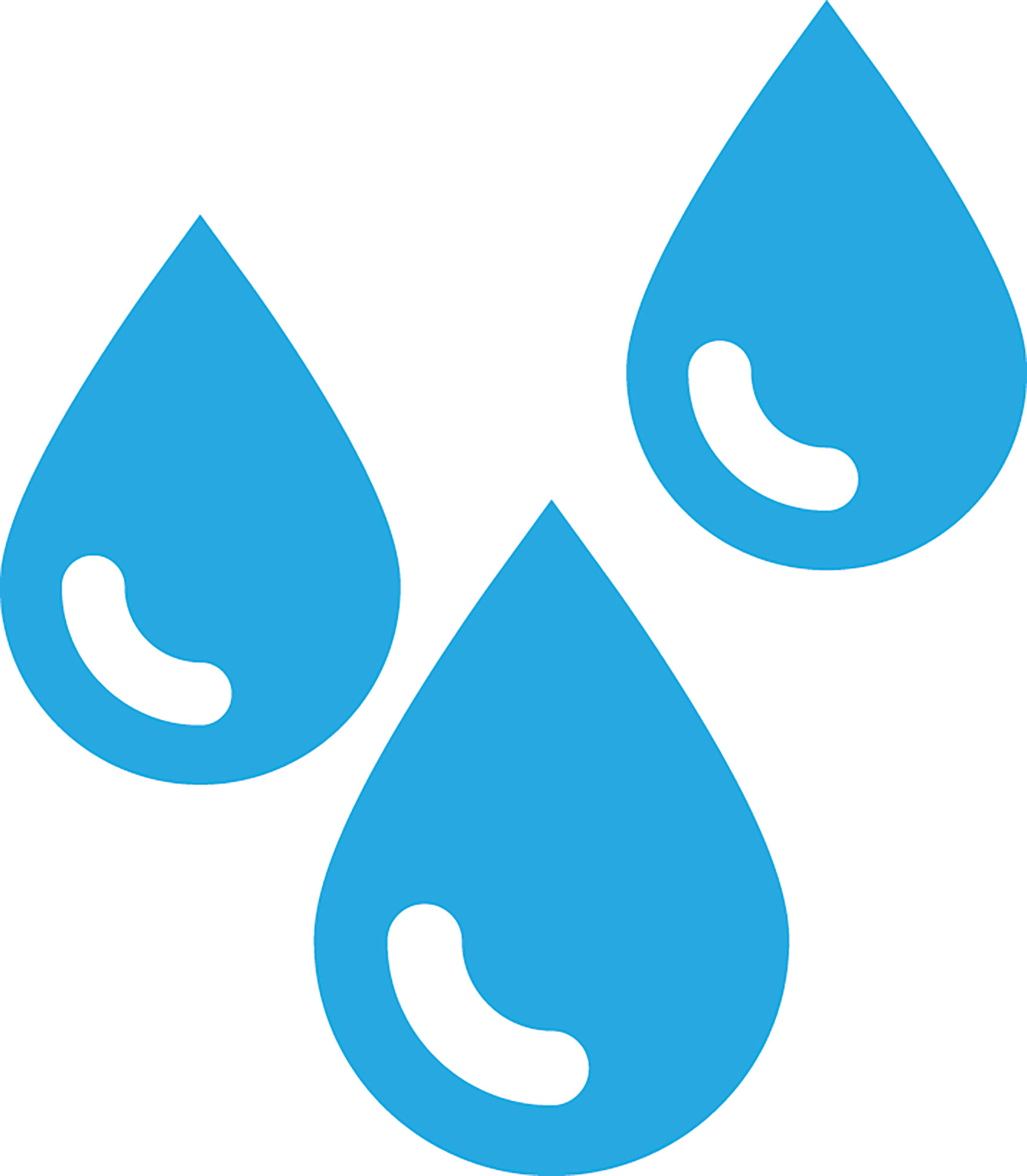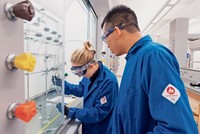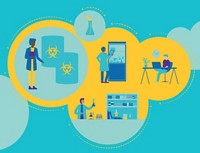Advertisement
Grab your lab coat. Let's get started
Welcome!
Welcome!
Create an account below to get 6 C&EN articles per month, receive newsletters and more - all free.
It seems this is your first time logging in online. Please enter the following information to continue.
As an ACS member you automatically get access to this site. All we need is few more details to create your reading experience.
Not you? Sign in with a different account.
Not you? Sign in with a different account.
ERROR 1
ERROR 1
ERROR 2
ERROR 2
ERROR 2
ERROR 2
ERROR 2
Password and Confirm password must match.
If you have an ACS member number, please enter it here so we can link this account to your membership. (optional)
ERROR 2
ACS values your privacy. By submitting your information, you are gaining access to C&EN and subscribing to our weekly newsletter. We use the information you provide to make your reading experience better, and we will never sell your data to third party members.
Sustainability
To find hacks for greening your lab, start with the freezer
Temperature adjustments are only one way to reduce a lab’s environmental footprint, but change takes a little outside-the-box thinking
by Carmen Drahl
September 1, 2018
| A version of this story appeared in
Volume 96, Issue 35

Not many nightmare scenarios grip Kristala Jones Prather’s imagination. But one that haunted her for a long time involved the –80 °C freezer in her Massachusetts Institute of Technology lab. Freezer temperatures can vary by a degree or two, especially when researchers constantly open and close doors to pull out or store precious samples. But what if the freezer warmed up over a long weekend because of a mechanical failure or power outage?
Prather and her team need ultralow temperatures to stash microbes they have engineered to make biofuels and other valuable chemicals. A warmed, suboptimal freezer might ruin work, thwart grant proposals, and delay thesis defenses. Little wonder that the idea of the Prather lab’s freezer temperature hitting –70 °C felt, she says, “like the end of times was coming.”
Until Prather had what she calls her revelation. Her lab became a pilot case for MIT’s Green Labs Program in April 2016. During the certification process, she learned that setting the freezer to –80 °C was overkill for her lab’s cultures and a waste of energy besides. “We call them minus-80 freezers, but you can set them to whatever you want,” she says. She chuckles at the thought that since summer 2016, her freezer has been set to –70 °C, the very temperature that used to trigger panic.
Greening a laboratory—applying sustainable strategies to reduce a lab’s impact on the environment—isn’t a new concept. But the tale of the low-temperature freezer illustrates a challenge in this field. Some not-so-sustainable practices are culturally driven rather than based on necessity. And the activation barrier to behavior change can be intimidating, even for an intervention as straightforward as adjusting a touch pad or dial.
The go-to ultralow-temperature freezer setting was not always –80 °C, says Allen Doyle, an independent consultant and longtime sustainability manager who’s worked at the University of California’s Santa Barbara and Davis campuses. He’s encountered more senior scientists who call ultralow-temperature freezers “the minus 70” instead of “the minus 80.” Doyle and other sustainability managers who spoke with C&EN suspect marketing campaigns got the concept of –80 °C stuck in researchers’ heads. As freezer technology improved, companies offered ever-colder operating temperatures. Scientists simply came to believe that colder was better for every sample, whether or not that was the ads’ intent. “I call the trend ‘cold creep,’ or ‘freezer wars,’ ” Doyle says. It would take scientific curiosity to reverse it.
Kathryn Ramirez-Aguilar hadn’t been this excited about a phone call in some time. It was early 2010, and a researcher had phoned her to relate how she was squeezing more life from a struggling –80 °C freezer. Ramirez-Aguilar, an analytical chemist by training, was relatively new to her job as Green Labs Program manager for the University of Colorado, Boulder. As Ramirez-Aguilar recalls, the lab had called a freezer technician, who, after some tinkering, suggested going easy on the machine by adjusting the temperature to –70 °C. That sounded risky to the researcher. Uncertain, she contacted the lab’s principal investigator to ask permission for the change. To everyone’s surprise, the group leader had no problem with increasing the temperature and even mused, like Doyle’s senior scientists, that he wasn’t sure why folks ever changed to –80 °C in the first place.
The phone call inspired Ramirez-Aguilar to act. She started asking around the Colorado campus and found a handful of labs that had never gotten caught in the cold-creep trend. These teams had stored sensitive samples at –70 °C successfully, sometimes for many years. Ramirez-Aguilar built a spreadsheet to track the anecdotal information.
When Ramirez-Aguilar got that game-changing phone call, Doyle was at least two years into searching the peer-reviewed literature for any publications demonstrating a difference in sample preservation at –70 versus –80 °C. To this day, he’s found scant evidence for a difference. Most studies show excellent storage at both temperatures and indicate that the freezing process itself—which in aqueous samples can lead to harmful ice crystals and dramatic pH changes because of buffer precipitation—is where damage can occur. At about the same time, other researchers began reporting case studies at bioscience conferences demonstrating that –70 °C is enough to keep samples such as antibodies and antioxidant assays stable, with even –20 °C being sufficient for certain applications, such as storing extracted RNA for one month.
Doyle and Ramirez-Aguilar joined forces in spring 2010. She contacted him to discuss his comprehensive green labs website, and they soon realized they were working on complementary freezer projects. “Allen and I worked together and shared information between us, and we also shared it with colleagues,” Ramirez-Aguilar says.

Those colleagues started looking to the duo for help with their own efforts. For instance, in summer 2015, Quentin Gilly, senior coordinator at Harvard University’s Green Labs Program, found himself in Colorado, where he made a point to reach out to Ramirez-Aguilar. She helped him set up meetings with lab managers who’d made the switch to –70 °C so he could learn about their implementation experiences. He started encouraging the practice at Harvard in the second half of 2016.
Today, the case for setting ultra-low-temperature freezers to –70 °C is stronger than ever. The daily energy consumption for just one standard-efficiency freezer at –80 °C can equal the daily average electricity consumption for one U.S. single-family home, according to a 2016 report from lead author My Green Lab, a California-based nonprofit that has certified over 200 green labs. Tests by Doyle, My Green Lab, and others suggest that freezers use up to 40% less energy when they’re set to –70 rather than –80 °C.
At the University of Colorado, Boulder, roughly 50% of the approximately 160 ultra-low-temperature freezers operate at –70 °C today, compared with 3% in 2010. Ramirez-Aguilar’s Google spreadsheet of sample storage experiences gets new entries multiple times each year. The University of Edinburgh is conducting a five-to-10-year study to examine the impact of different storage temperatures (–80, –70, and –60 °C) on sample durability.
My Green Lab consults for a number of pharmaceutical and biotech companies, where the situation differs somewhat from academic institutions. Executive director Allison Paradise explains that cold storage of drug products and precursors is subject to standard operating procedures and guidelines, some set by the U.S. Food & Drug Administration, which still require a –80 °C set point. For R&D labs, however, a company may decide to switch all its freezers to –70 °C at once, subject to researcher approval.
And freezer vendors are very aware of the new data. Thermo Fisher Scientific, for instance, offers brochures and product notes about the option to run freezers at –70 °C. “I don’t know if in the not-too-distant past we would’ve had a technical note that says ‘Consider minus 70,’ but today we do,” says Alex Esmon, senior product manager for cold-storage laboratory equipment at Thermo Fisher. Esmon says that for some years he and his colleagues have collaborated with Ramirez-Aguilar, Doyle, My Green Lab, and others. “We have tried to do things that have less of a footprint,” including developing products that consume less energy and implementing environmentally friendly refrigerants, he explains, “while empowering customers to do what they need to be successful, at whatever temperature necessary.”
Researchers naturally want to ensure that a temperature change won’t harm their samples—frequently their life’s work. Sometimes friendly competition is a way to encourage them to do some freezer research. My Green Lab cohosts an annual Laboratory Freezer Challenge with the International Institute for Sustainable Laboratories, a nonprofit dedicated to advancing green laboratory design. Over five months, individual labs and institutions earn points for implementing best practices for cold storage, with winners receiving awards and a mention in the journal Nature.
Doyle finds that changes in phrasing can also alter researchers’ perceptions. “I say ‘Chill up.’ It sounds less threatening than saying ‘Warm up your freezer,’ ” he explains. He designed a campaign called “Just Call Me Ultra-Low” to discourage scientists from associating a specific temperature with a freezer.
Green lab specialist Christine Alencar started her work at the University of Virginia in 2016, and she’s made strides with freezers by figuring out what drives individual researchers and delivering her message in different ways. For example, a lab might not pay for its own electricity, so the incentive to save electricity might not resonate right away.
Alencar reminds those researchers that the 10-degree difference puts less stress on a freezer’s compressor. When every dollar of funding counts, extending the lifetime of a piece of equipment for which an investigator is financially responsible starts to sound appealing.
Sometimes a lab has two freezers, and in these cases she suggests raising the temperature on only one freezer and reorganizing samples so that the most important ones are still at –80 °C. That way, labs can test their samples for degradation and determine for themselves whether moving that one freezer to –70 °C permanently is a good option. She also encourages teams to share ultra-low-temperature freezer storage if possible, to organize samples so that researchers can find them without keeping the freezer door open, and to replace old, energy-inefficient freezer models.
Advertisement
“I never take a ‘you must do this’ tone. I provide information and try to be a facilitator,” Alencar says. Some labs decide that –80 °C is best for them. Others, however, may come around in a year or two after conducting small tests or discussing the idea with peers who have made the switch. “With sustainability, it’s kind of a long game,” Alencar says.
“People establish certain practices, and everybody forgets why,” MIT’s Prather says. She hasn’t had any problems since changing her freezer’s temperature. The only time her lab sets the freezer temperature to –80 °C or below is during deicing, which requires leaving doors open for longer than normal. “The biggest thing we’re afraid of is changing and having things not work anymore,” she says, “and that’s not really the scientific method.”.
Green case studies
Increasing your freezer’s temperature isn’t the only way to green your lab. Here are some other methods scientists have adopted.
Water

To rising-fourth-year graduate students Jacob Burman and Caitlin Farr, it seemed inefficient to use aspirators hooked up to the water faucets to pull vacuum for filtrations. The vacuum arises from the aspirator’s narrow tube as water gushes into the drain. Water—lots of it—gets wasted.
So when their adviser, Simon Blakey, asked his group to think of green lab ideas, the duo obtained funding for a vacuum pump from Emory University’s sustainability office. The shared pump travels the lab by cart and features a solvent trap for harmful chemicals so they can be disposed of in the proper waste streams. Although vacuum pumps use electricity, Burman suggests that the benefit of saved water outweighs the cost. A challenging filtration can take up to 20 minutes of flushing water or under a minute with the vacuum pump.
Heating

At Emory, Burman and Farr replaced mineral oil and silicone oil baths, commonly used to heat chemical reactions to temperatures over 100 °C, with metal heating blocks. Oil baths brown with time and accumulate contaminants, and the oils must be disposed of and replaced every two to three months. “Developing new reactions is my passion, but I don’t want my passion to affect the environment I live in,” Farr says.
Reagents

At pharmaceutical company Amgen, a chemical inventory system tracks every reagent from the day it’s ordered to the day it runs out. In a 12-month period across four research sites, the system flagged nearly 700 requests for chemicals already in stock. Reducing duplicate orders reduced waste and saved over $124,000.
Fume hoods

Fume hoods can be among the worst offenders in terms of energy consumption because they constantly remove cooled or heated air. This wastes energy. Some advanced hood designs can both keep volatile compounds contained and slow airflow down considerably with the sash partially raised, but every chemist can benefit by closing the hood sash when the hood is not in use. This action shields lab occupants from ongoing or unexpected reactions and in many cases can conserve airflow.
When he was working at the University of California, Davis, sustainability manager Allen Doyle codesigned stickers that can be affixed to hood sash frames to promote proper placement. “It’s a 50-cent solution to a thousand-dollar problem,” he says.
At Cornell University, design and environmental analysis graduate student Kristin Aldred Cheek, laboratory ventilation specialist Ellen Sweet, and their colleagues are experimenting with a smiley-face emoji sticker that is cut in half and lines up when researchers properly close a fume hood sash.
Solvents

The National Institutes of Health offers in-house distillation to purify and recover ethanol; acetone; formalin, commonly used in specimen preservation; and xylene, commonly used in microscopy studies of biological tissues, says Bani Bhattacharya, who leads NIH’s sustainable labs working groups. This service reduces not only costs but also waste.
Electronic equipment

At the University of Edinburgh, lab sustainability coordinator Andrew Arnott purchased inexpensive plugs that put laboratory equipment such as ice makers, drying ovens, and water baths on timers. The equipment saves energy by shutting off at night; it turns back on early enough to be ready when the first scientists arrive in the morning.
Packaging

When Daniel Nocera’s lab moved from Massachusetts Institute of Technology to Harvard University, Nocera lab staff scientist Dilek Dogutan saw an opportunity. “We were buying solvent in 4-L bottles” in the MIT lab, she recalls. That generates a pile of packaging waste and carries a risk of spills with every solvent transfer. So she helped design a solvent-dispensing system with refillable 20-L containers. “They look like beer kegs,” Dogutan explains. When a solvent runs dry, the lab ships the bar-coded stainless-steel container to Sigma-Aldrich for a refill, no packing material required.
Disposables

Amgen’s research facility in Massachusetts processes laboratory plastics such as pipette tips and gloves that waste management companies don’t typically recycle. The technology converts the plastic waste into recycled plastic lumber that can become construction material for buildings or speed bumps for roadways.





Join the conversation
Contact the reporter
Submit a Letter to the Editor for publication
Engage with us on Twitter